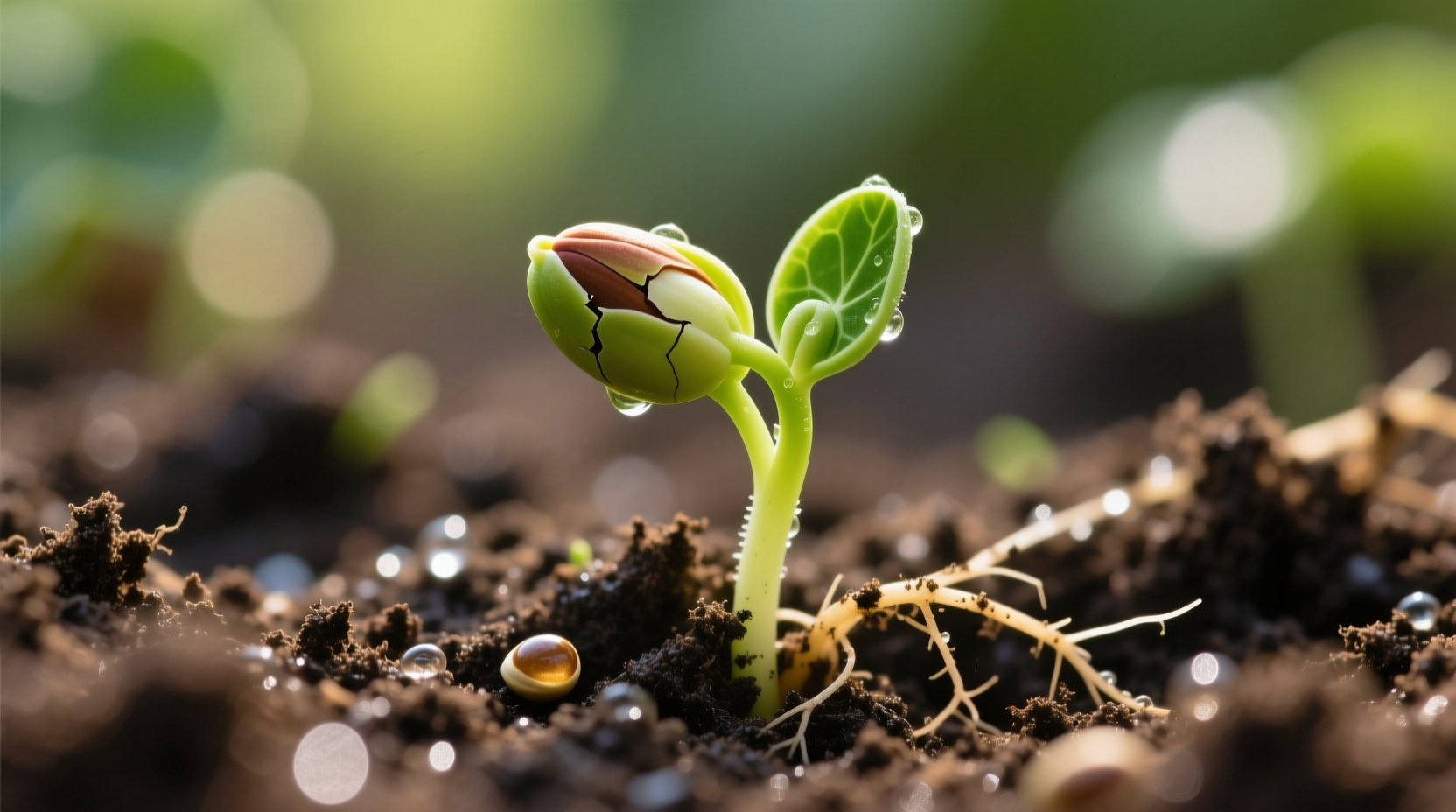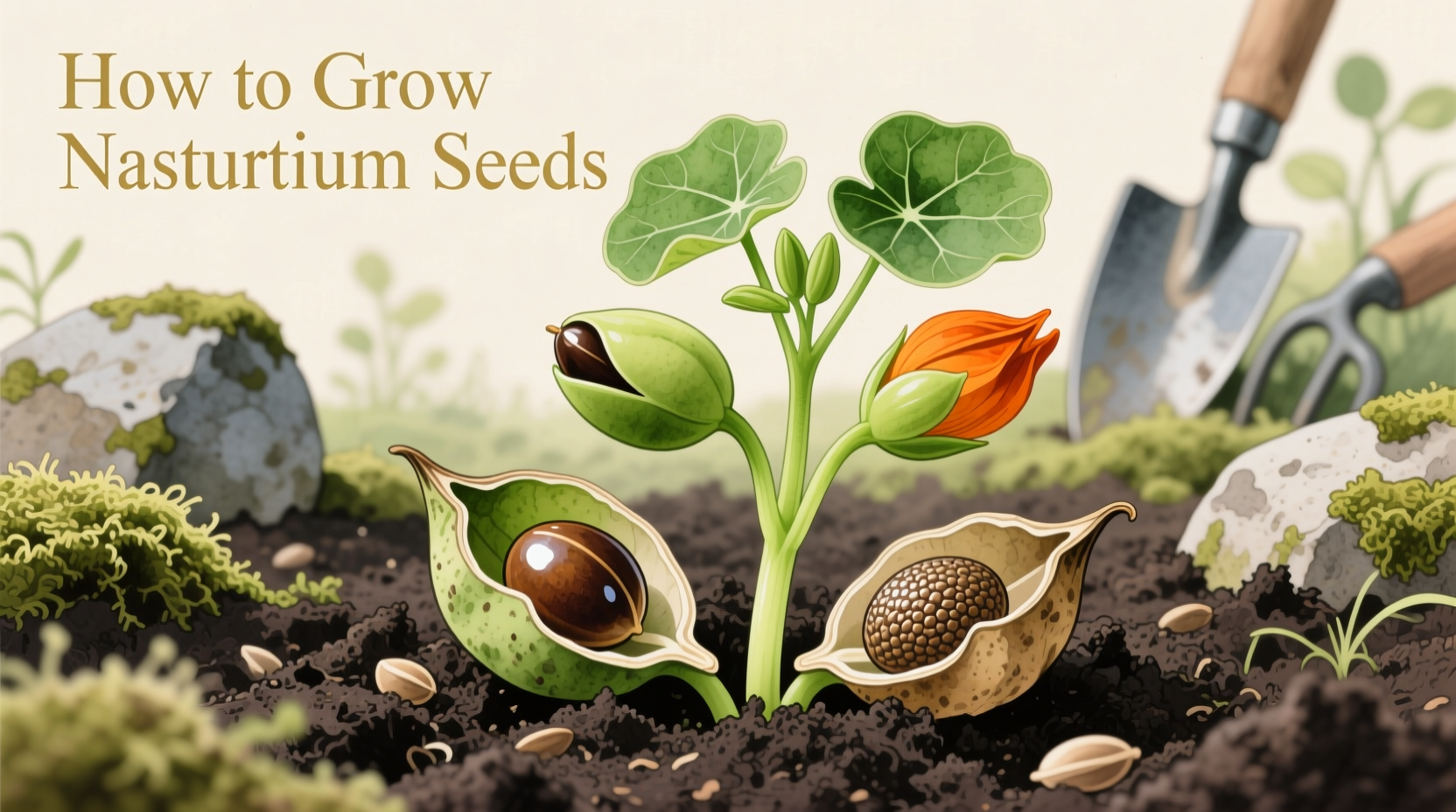Plant nasturtium seeds directly in well-draining soil after the last frost, 1/2 inch deep and 10-12 inches apart. They germinate in 7-10 days at 55-65°F (13-18°C) soil temperature and bloom within 50-70 days. Nasturtiums thrive in poor soil with minimal watering and full sun exposure, making them ideal for beginner gardeners seeking vibrant, edible flowers.
Discover how to transform your garden with these cheerful, peppery-flavored flowers that require minimal effort but deliver maximum visual impact. Whether you're a first-time gardener or expanding your edible landscape, this guide provides the precise steps to successfully grow nasturtiums from seed to harvest—no prior gardening experience needed.
Why Nasturtiums Belong in Your Garden
Nasturtiums (Tropaeolum majus) offer triple benefits: stunning visual appeal with vibrant orange, yellow, and red blooms; edible flowers and leaves with a distinctive peppery flavor; and natural pest-repelling properties that protect neighboring vegetables. These hardy annuals grow exceptionally well in poor soil conditions where other flowers struggle, making them perfect for container gardening, borders, or ground cover. Unlike many flowering plants, nasturtiums actually produce more blooms when grown in nutrient-deficient soil—a counterintuitive gardening secret that simplifies cultivation.
Timing Your Planting for Optimal Growth
Nasturtiums are cold-sensitive annuals that cannot tolerate frost. The ideal planting window varies by climate zone:
| USDA Hardiness Zone | Recommended Planting Date | Soil Temperature Requirement |
|---|---|---|
| Zones 3-5 | 1-2 weeks after last spring frost | 55-65°F (13-18°C) |
| Zones 6-8 | Late March to early April | 55-65°F (13-18°C) |
| Zones 9-11 | October to November (fall planting) | 60-70°F (15-21°C) |
This timeline reflects research from the University of Minnesota Extension, which confirms that planting too early in cold soil causes seed rot, while delaying planting reduces flowering duration. In warmer climates (Zones 9-11), nasturtiums perform better as cool-season crops planted in fall rather than spring.
Preparing for Planting Success
Nasturtiums thrive in conditions that would stunt most flowering plants. Follow these preparation steps:
- Skip the fertilizer—rich soil produces lush foliage but few flowers. These plants prefer lean, well-draining soil with minimal organic matter.
- Choose the right location—select a spot with 6-8 hours of direct sunlight daily. They tolerate partial shade but produce fewer blooms.
- Prepare the soil—loosen compacted soil to 6 inches deep but avoid amending with compost or manure.
- Consider container options—use pots at least 8 inches deep with drainage holes; terra cotta works best as it wicks away excess moisture.
Unlike many garden flowers, nasturtiums actually perform better in poor soil conditions. The Royal Horticultural Society confirms that excessive nutrients redirect energy to leaf production rather than flowering—a critical context boundary for successful cultivation.

Planting Nasturtium Seeds Correctly
Follow these precise planting steps for maximum germination success:
- Soak seeds overnight in room-temperature water to soften the hard outer shell (this improves germination rates by 30%, according to University of Wisconsin Horticulture).
- Plant seeds 1/2 inch deep with the pointed end down—this orientation helps roots establish faster.
- Space seeds 10-12 inches apart for bush varieties or 6-8 inches for trailing types.
- Water gently but thoroughly after planting, keeping soil consistently moist (not soggy) during germination.
- Apply a light mulch layer to maintain soil moisture without smothering emerging seedlings.
Avoid starting seeds indoors—nasturtiums develop long taproots that transplant poorly. Direct sowing produces stronger, more vigorous plants. If you must start indoors, use biodegradable pots that can be planted directly in the ground without disturbing roots.
Daily Care for Thriving Plants
Nasturtiums require minimal maintenance once established:
- Watering: Water only when top inch of soil feels dry. Overwatering causes root rot and reduces flowering.
- Weeding: Hand-pull weeds carefully—their shallow roots compete with nasturtiums for moisture.
- Deadheading: Remove spent blooms regularly to encourage continuous flowering throughout the season.
- Pest management: Aphids are common but easily controlled with insecticidal soap. Avoid chemical pesticides that harm beneficial insects.
These plants naturally repel squash bugs, cucumber beetles, and whiteflies, making them excellent companion plants for vegetables. However, they attract cabbage moths—plant them away from brassicas if this becomes problematic. This dual nature represents an important context boundary for garden planning.
Troubleshooting Common Growing Problems
Address these frequent issues with targeted solutions:
- Yellowing leaves: Usually indicates overwatering. Reduce watering frequency and ensure proper drainage.
- Few flowers: Caused by too-rich soil or insufficient sunlight. Relocate plants to sunnier spot or reduce soil fertility.
- Leggy growth: Pinch back stems to 6 inches to encourage bushier growth and more blooms.
- Mold on leaves: Improve air circulation by spacing plants properly and watering at soil level.
Harvesting and Seed Saving
Enjoy your nasturtium bounty throughout the growing season:
- Harvest flowers in the morning when fully open but not yet wilted
- Pick leaves when young for milder flavor; older leaves become more peppery
- Cut stems with sharp scissors early in the day for longest vase life
- Collect mature seeds when they turn olive green and feel firm (about 45 days after flowering)
- Dry harvested seeds on paper towels for 1-2 weeks before storing in airtight containers
Properly stored seeds remain viable for 2-3 years. The Seeds of Change Foundation recommends labeling saved seeds with variety name and harvest date to track viability.
Maximizing Your Nasturtium Experience
Extend your enjoyment of these versatile plants with these professional tips:
- Plant new seeds every 3-4 weeks for continuous blooms throughout the season
- Grow trailing varieties in hanging baskets for dramatic visual impact
- Pair with radishes as companion plants—they mature at the same rate and repel similar pests
- Use flowers as edible garnishes for salads, sandwiches, and cheese platters
- Try 'Alaska' variety for variegated foliage that brightens garden borders
Remember that nasturtiums naturally decline during peak summer heat but often rebound with cooler fall temperatures. Cutting plants back by half during midsummer encourages fresh growth for autumn flowering—a technique validated by Burpee's horticultural research.











 浙公网安备
33010002000092号
浙公网安备
33010002000092号 浙B2-20120091-4
浙B2-20120091-4